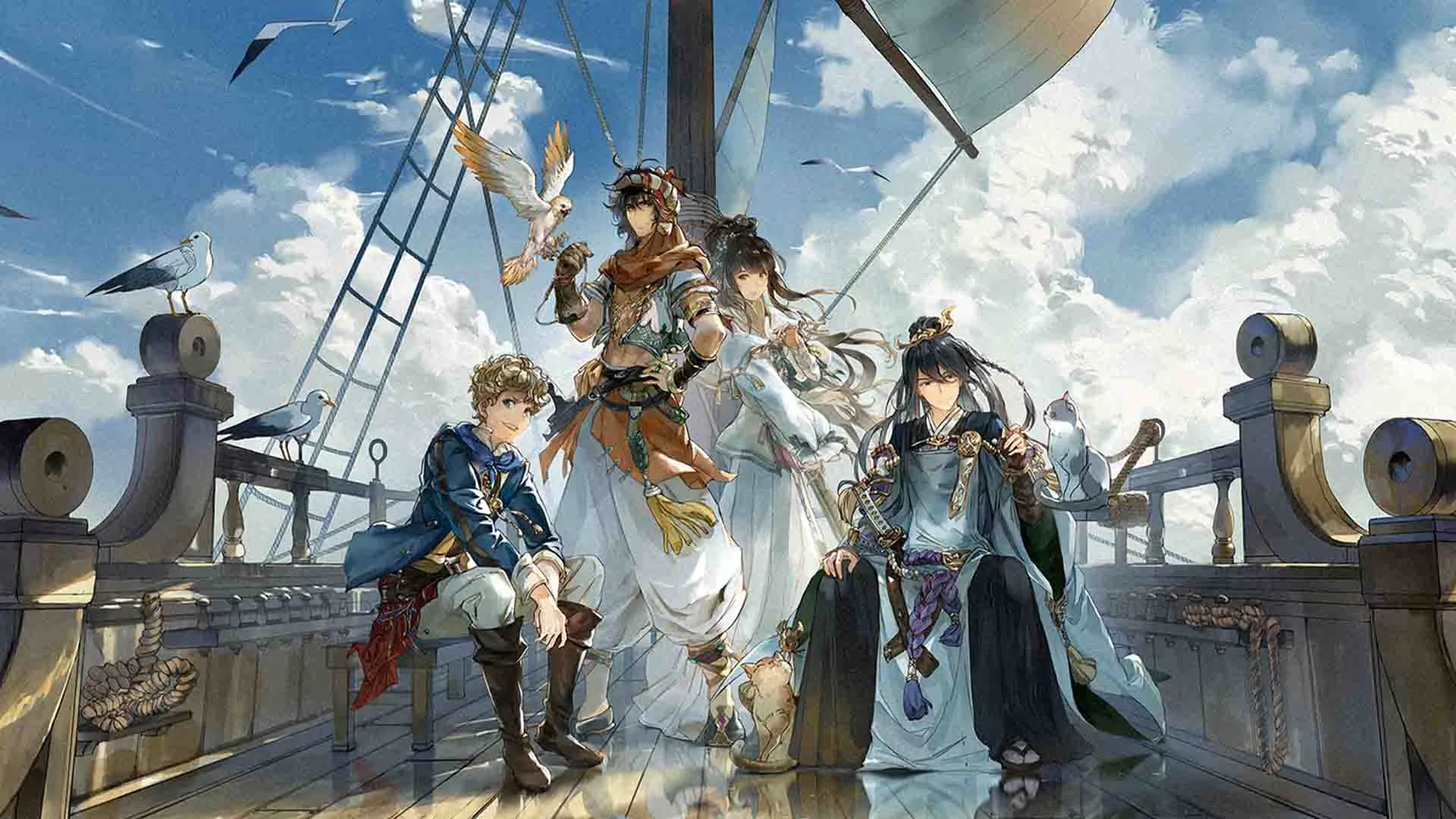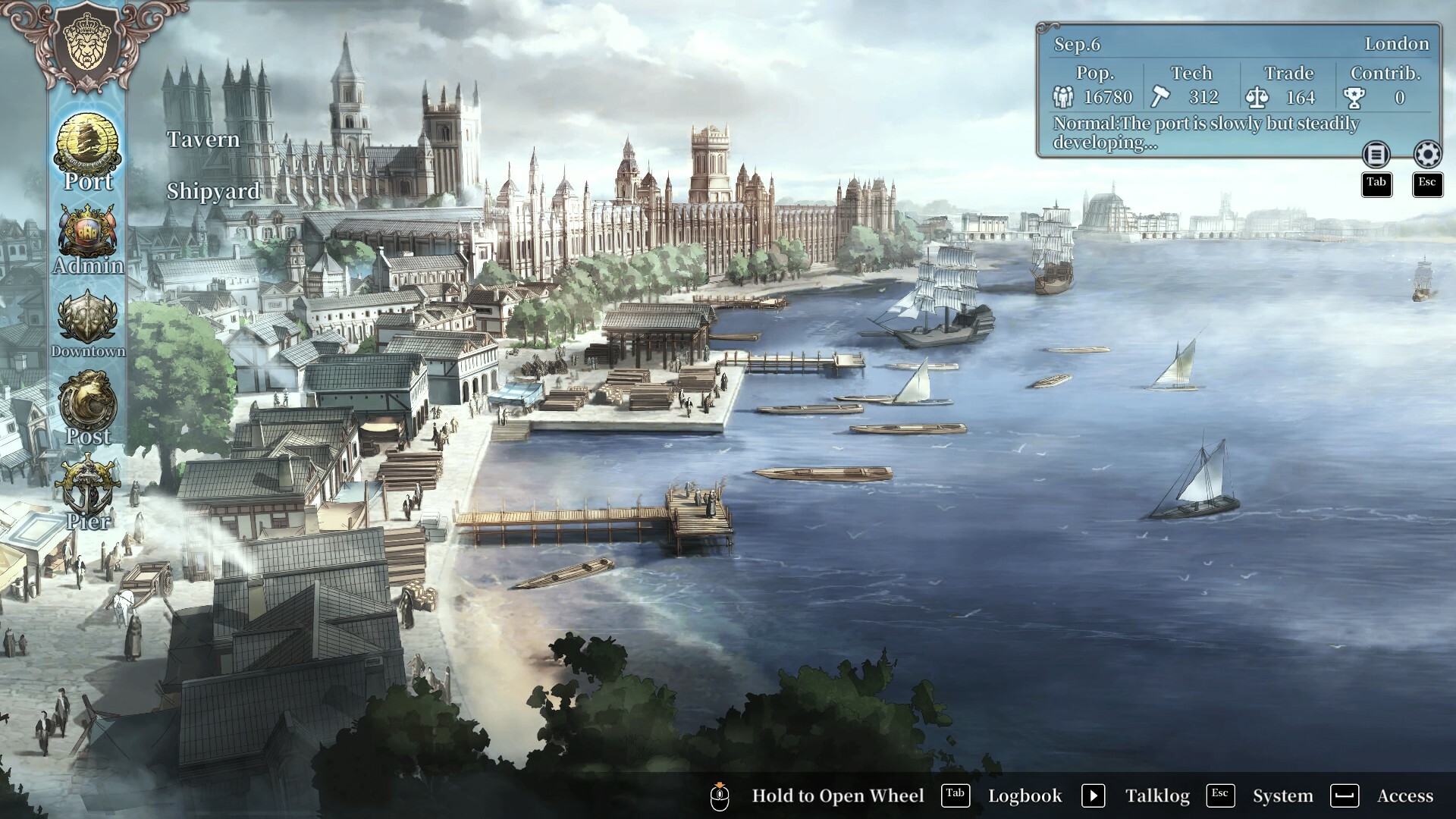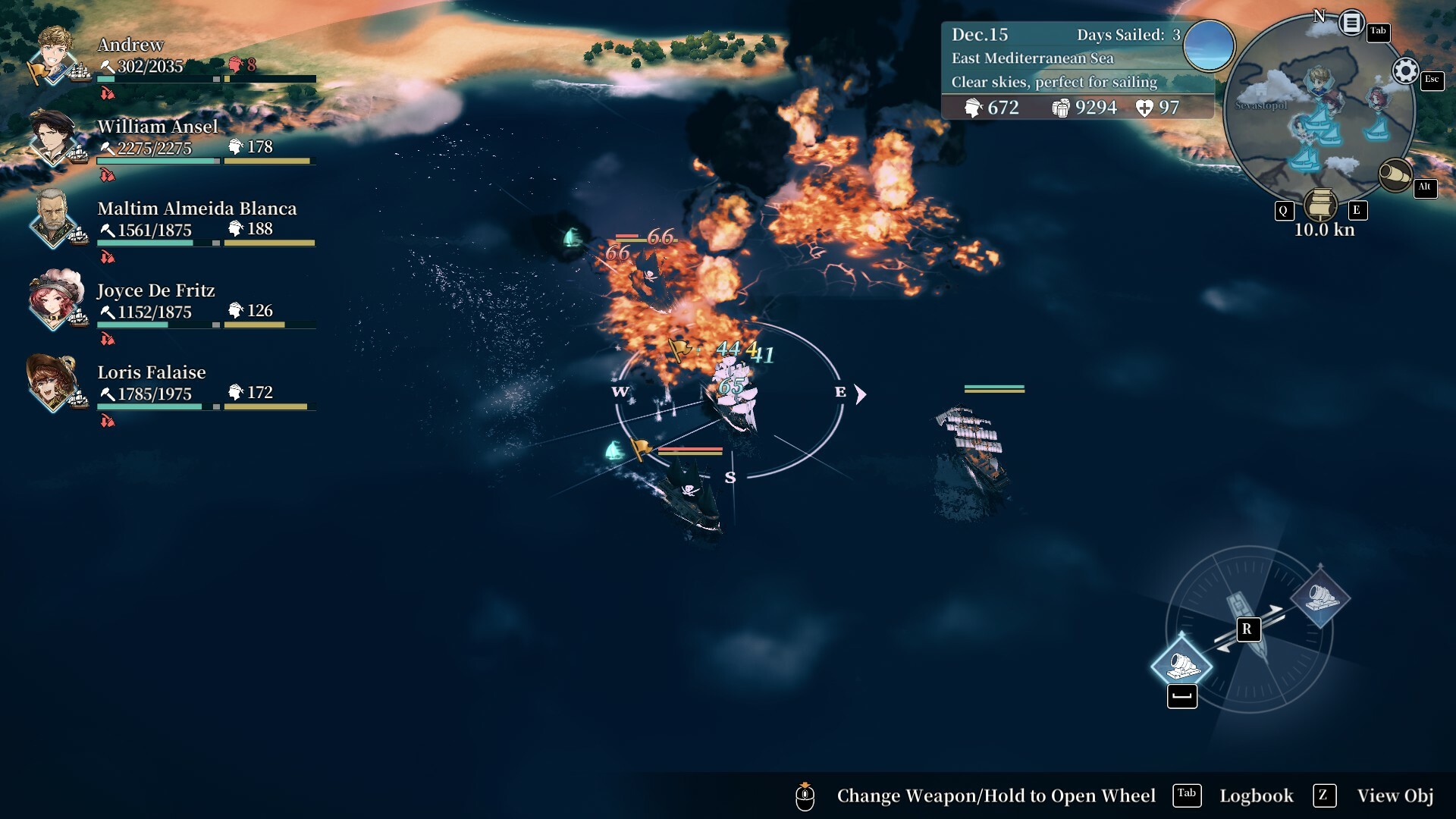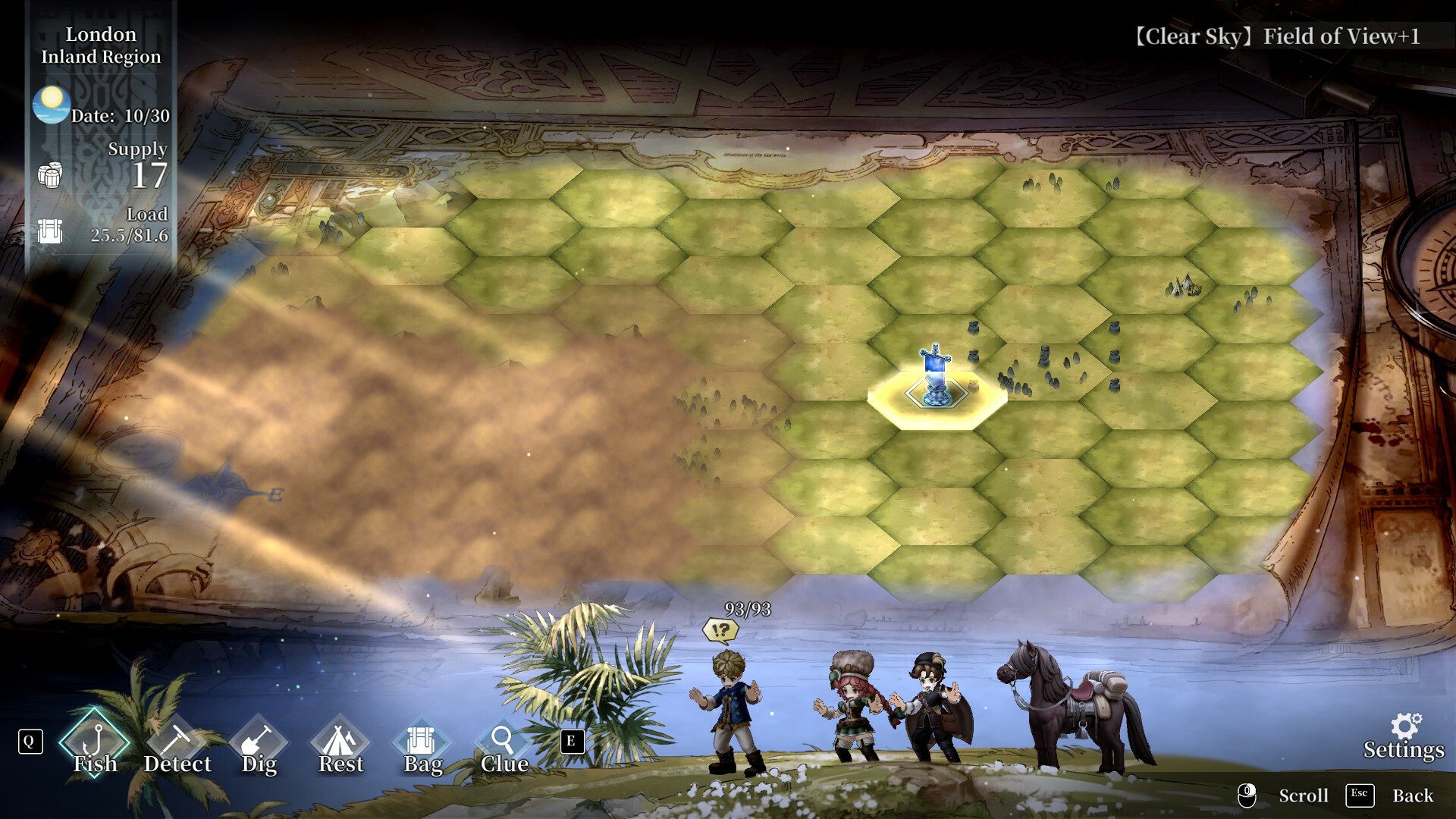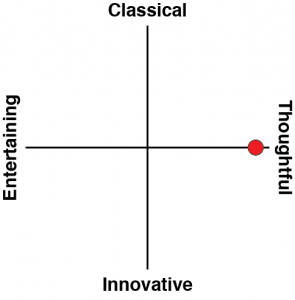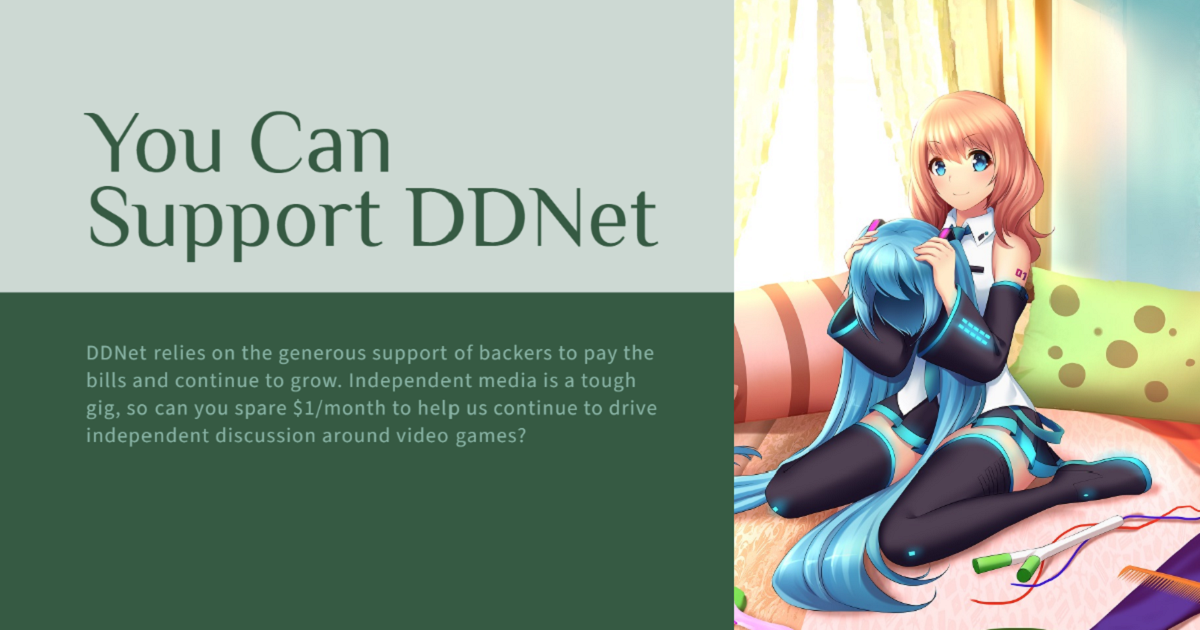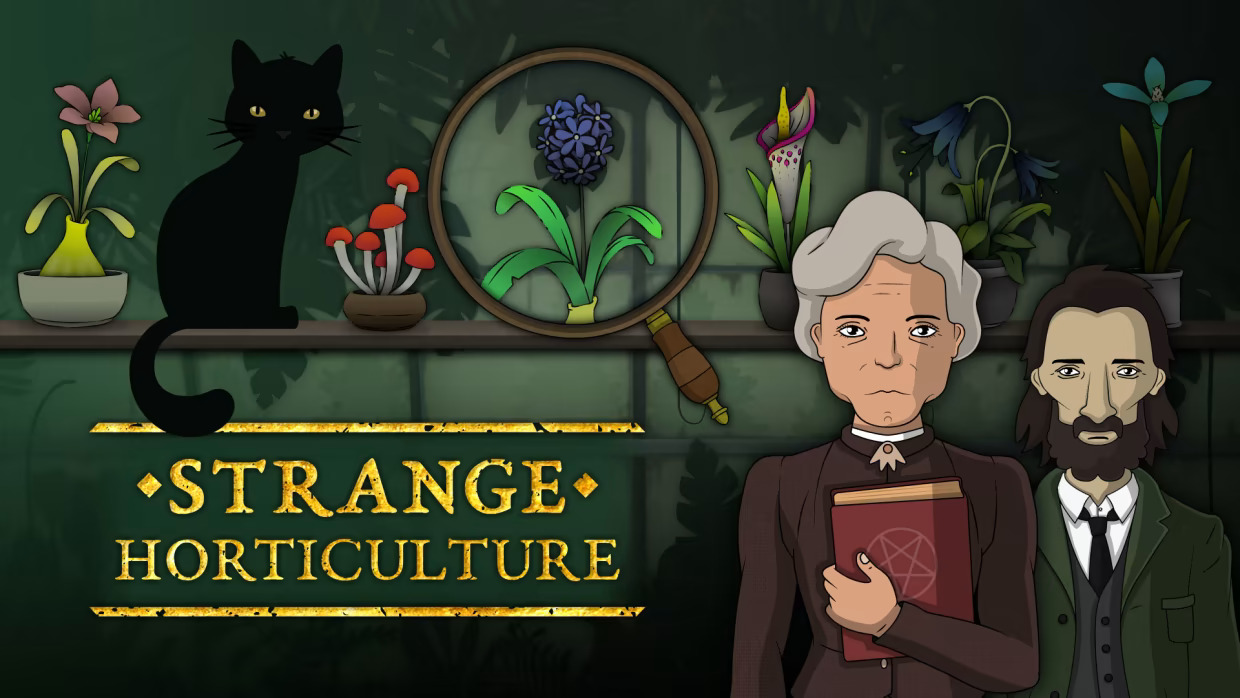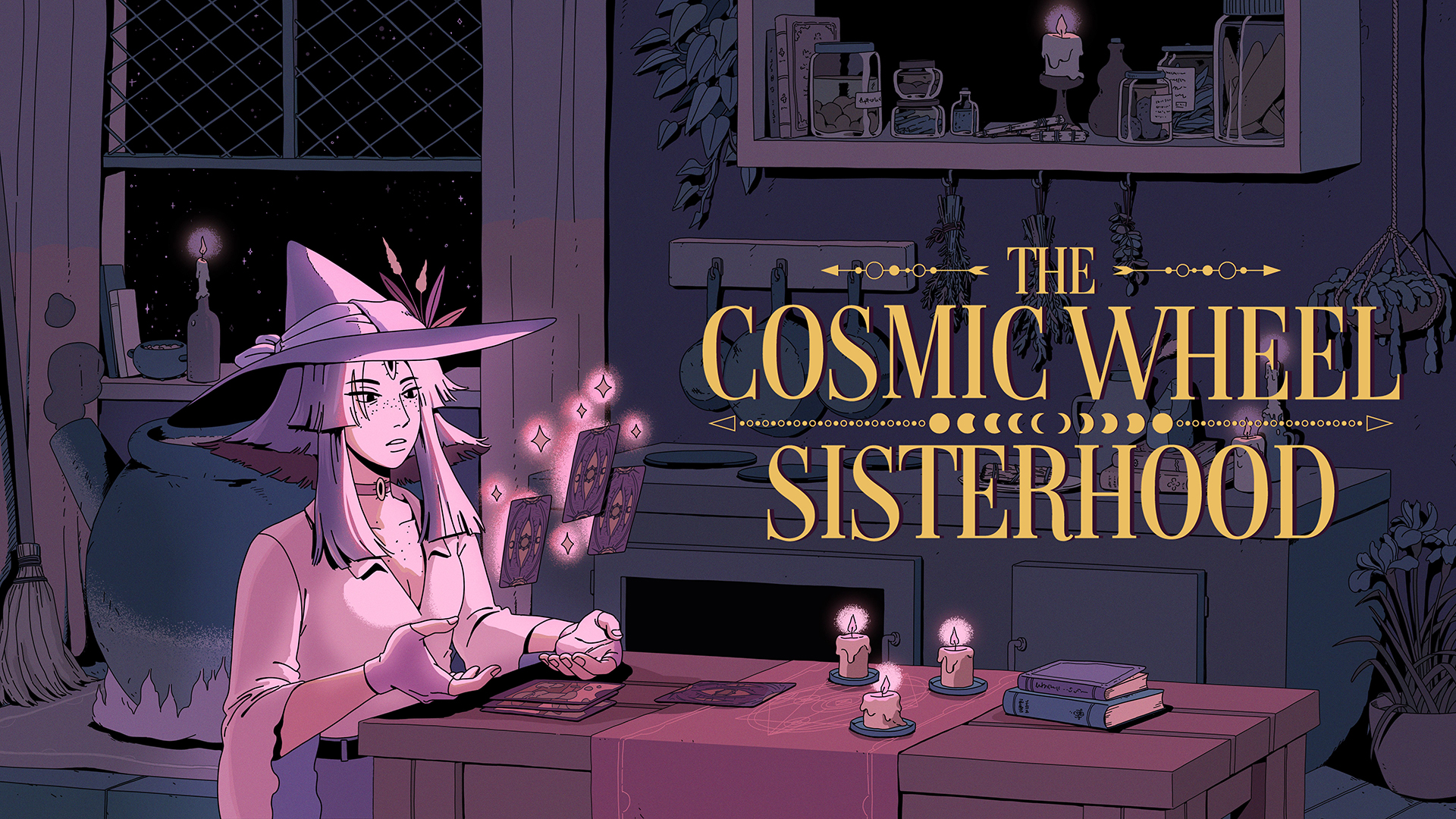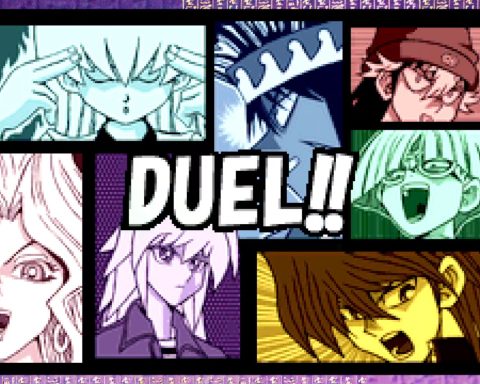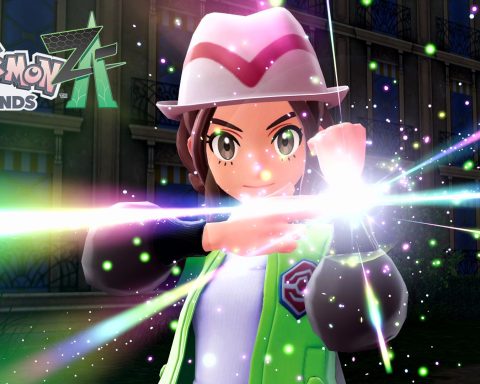Given that Koei Tecmo won’t do anything with its Uncharted property (no, not the Sony one), Sailing Era was something worth paying attention to leading up to its release. With some truly beautiful character art, this promised to be a swashbuckling adventure on the high seas, combining JRPG mechanics with buy-low-sell-high trade systems, and even inland exploration. Unfortunately, the concept is far too ambitious for what the developers were able to actually deliver.
The problems are apparent almost immediately, when your very first quest is to “follow the direction the wind blows” from the Chinese port that you start (at least, that was the case in my play-through, as the game gives you a couple of different characters to choose between) and make your way to a specific city in Japan. Unfortunately, the scale of the map is heavily abstracted, and so, even though I’m very familiar with Japan’s geography, I was thrown a bit when I sailed past a Taiwan that I didn’t expect to see where it was, and then momentarily struggled to find the town in Japan that I actually wanted to get to. The combination of poor directions and an abstracted scale really got me.
Things didn’t get any better later in the game, when I needed to travel to places in the world that I’m less familiar with, and the developers seemed to decide that their difficulty curve was going to be delivered through increasingly vague hints. It’s quite possible for Sailing Era to become stressful, because in-game “days” sail (hah) past very rapidly, and if you’re not efficient then you’re going to struggle to feed and pay your crew.
It doesn’t help that the translation is poor. This continues to be a problem that plagues Chinese game development. The country is rapidly growing as a game development centre, but localisers seem to have a way to go to catch up – it’s a little like how a lot of Japanese game development was back on the SNES. Another good example is Banner Of The Maid, a game I otherwise adored. It’s a pity because it can undermine some otherwise excellent work. Sadly, while the text in Sailing Life is legible, and you’ll be able to follow along with the characters and plot line, it’s also so stilted and clearly too literal, meaning that it’s not particularly clean reading. As a result, you need to concentrate on the text much harder than you should, and it’s also harder to retain meaning than it should be.
That translation also affects what, I think, could have been a decent narrative. Characters… lack character… but that’s only because they’re all written in the same stilted translation tone. They probably have personalities in their native scripts, but that doesn’t come across. Likewise, Sailing Life does a… brave… thing and references the many, many things that went very wrong in the era it’s set. We are talking about European colonialism and the nasty ripples that had. I would imagine that developers from China, itself a not-quiet victim of colonialism, would have a nuanced and interesting take on that subject, but whether it’s a consequence of the translation or just plain bad writing (I have no way of telling which) the actual narrative is much more blasé about it, seeming to drop those references just to set the game in the era, rather than actually do something with it.
Sailing Life is at its most compelling when the narrative and quest structure get out of the way and you’re free to simply enjoy the journey. There is an undeniable thrill to taking on pirates with your increasingly powerful fleet, or filling your merchant ships with exotic goods to move around the world for mega-profit. Journeying out into the world and discovering ports and cities is, likewise, a thrill (at least for the first time).
There are even two forms of combat, and they’re both thrilling in their own way, albeit simple. Ship-to-ship battles involve strafing around and trying to line up the perfect shot for your cannons. Meanwhile, when ships are close enough to one another, an automated battle takes place on deck, and might result in a duel between captains (which plays out basically like rock-paper-scissors). By-and-large success in combat relies on you building your ships and crew stats up well, but there is excitement in seeing whether your carefully cultivated crew is up to the task of battling a notorious pirate on the sea.
But even here, when Sailing Life plays to its strengths, there are unfortunate issues with it. The interface really isn’t great at information transfer. It took me a long time before I was comfortable with tracking the health of my crew, the supplies I had available, the performance of my merchandise, and the results of combat. This is particularly true when you disembark and explore inland. That’s a truly horrible experience of sending a little flag representing your party around a hexagonal map and… look for things. But supplies can run out way too quickly without plenty of preparation…. Which I guess is realistic, but “more obnoxiously difficult than the Oregon Trail” isn’t a great selling point. Especially for a game in which the land bits are a distraction.
Meanwhile, for all its moments of beauty, Sailing Life is far too often flat and lifeless (hah). The static pictures of ports and towns are detailed enough, but reduce the core reason to explore the world to a glorified menu. The in-game graphics are perfectly serviceable, but nowhere near the standard of the concept art and character sprites. That juxtaposition is jarring and takes you right out of the moment.
Sailing Life has depth, and if you can deal with its rough edges, you may appreciate the grand vision and intent behind it all. I would buy Sailing Life 2 in a heartbeat if the team polished the foundation up and got a better translation team, worked on the consistency of the aesthetics, and made the breadcumb trail less obtuse. Unfortunately, as unrefined as this is, it’s very difficult to imagine this finding much of an audience.
